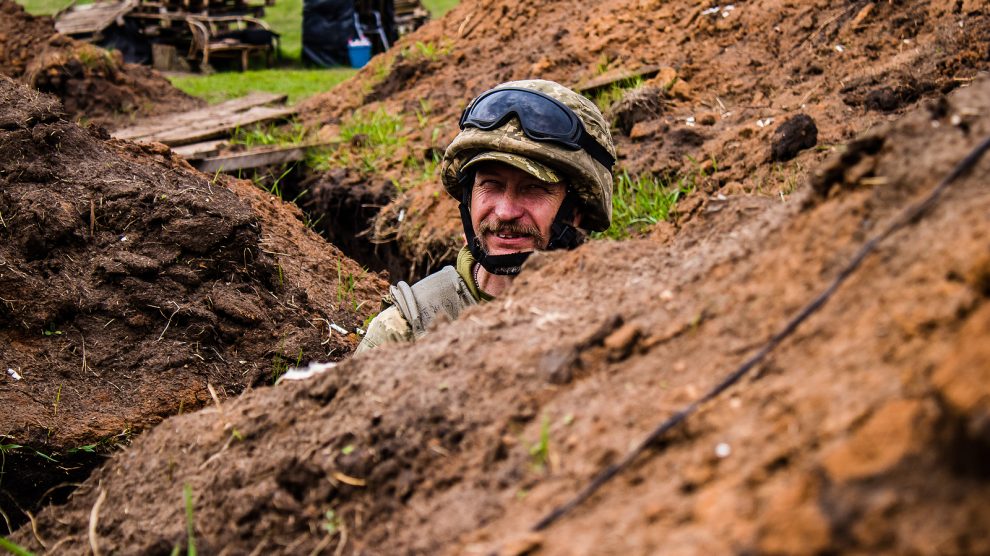Now is the time for NATO to allow Ukraine to deploy long-range missiles deep into Russian territory., a move that could finally tip the balance of the war in Ukraine’s favour. Hesitation now could squander a critical opportunity to bring Russia’s aggression to a definitive end.
When Russia’s full-scale war on Ukraine began, NATO’s response was cautious. Germany, in the early days of the invasion, sent a measly aid package of 5,000 helmets to Ukraine. This perfectly exemplified the widespread fear of Russian retaliation and escalation among Kyiv’s Western partners.
Russia’s threats, though rarely concrete, had their intended effect on Western decision-making. Fear of Vladimir Putin’s wrath was persistent, leading to strict limitations. Ukraine was not allowed to use NATO weapons beyond its borders, effectively hampering its ability to strike at the heart of the Russian war machine.
To make matters worse, Ukraine structurally received just enough equipment to keep its army on its feet, but never enough to change the tide of the war.
- In Ukraine, a cabinet reshuffle
- What Ukraine’s young people want from the country’s education system
- As the world watches Ukraine, the struggles of neighbouring Belarus go largely untold
But as the conflict dragged on, it became increasingly clear the Kremlin’s threats were more bark than bite. Gradually, NATO allies began to bolster Ukraine’s capabilities with more substantial aid, including advanced weaponry.
More recently, multiple NATO allies, like the US, UK and Germany, permitted Ukraine to use certain weapons on Russian territory. This turned out to be a game-changer.
Through a strategic masterstroke, the Ukrainian forces have reached a breakthrough. On August 6, Ukraine successfully invaded Russia’s Kursk Oblast, where it continues to progress today. By doing so, it has brought Putin’s war to his own doorstep.
Why the Kursk offensive matters
Besides the Sudzha gas hub, the Kursk Oblast holds no strategic value. Nevertheless, the incursion is important for several reasons.
First, the incursion has boosted the morale of the Ukrainian people, providing them with a rare moment of hope during a war that appeared to have reached a stalemate.
Additionally, since Ukraine now controls Russian territory, its negotiating position has drastically improved. But most importantly, the incursion has laid bare the structural vulnerabilities of Russia and the weaknesses of its leadership. Unable to nip the incursion in the bud, Putin’s credibility has been dealt yet another devastating blow.
It is evident Putin is not ready for a confrontation with Western powers. With Ukraine using American, German, British, and Polish weaponry to wreak havoc on Russian soil, another of Putin’s ‘red lines’ has been crossed. Yet again, the apocalyptic response Putin has so often threatened did not occur. The skies did not fall in. The Kremlin did not unleash its much-feared wrath. Once again, Putin’s bluster has been exposed as mere posturing.
Given that backdrop, the time has come for NATO to rethink its approach.
Considering the chaos Ukraine has been able to bring upon Russia using only tanks, armoured vehicles, drones and short-range missiles, it is clear Ukrainian forces have the capabilities to put a halt to the Russian aggression, so long as they have the necessary weapon systems at their disposal.
That’s why the US, the UK, France, and Germany must collectively lift restrictions on Ukraine’s use of their long-range missiles, including the US ATACMS, the UK’s Storm Shadows, France’s SCALP missiles, and Germany’s Taurus missiles.
These weapons could target critical Russian military infrastructure, supply lines, and command centres far behind the frontlines, crippling Russia’s ability to sustain its war effort. Moreover, it sends a powerful message: the days of impunity are over. Russia can no longer wage war on its neighbours without facing serious repercussions at home.
Fortune favours the bold
Critics might argue such a move risks escalating the conflict. But let’s be honest: this war is already as serious as it gets. The idea that Putin is holding back some cataclysmic response simply because Ukraine has not yet used NATO-supplied long-range missiles inside Russia is increasingly untenable.
If anything, his restraint in the face of recent Ukrainian successes suggests his options are limited and his threats are, once again, bluster designed to intimidate.
NATO’s primary concern should be to end this war as quickly and decisively as possible. That outcome is in everyone’s best interest. Allowing Ukraine to use all the tools at its disposal could be the key to achieving that goal.
The time for caution has passed; now is the time for decisive action. After all, as the saying goes, fortune favours the bold.
Unlike many news and information platforms, Emerging Europe is free to read, and always will be. There is no paywall here. We are independent, not affiliated with nor representing any political party or business organisation. We want the very best for emerging Europe, nothing more, nothing less. Your support will help us continue to spread the word about this amazing region.
You can contribute here. Thank you.


